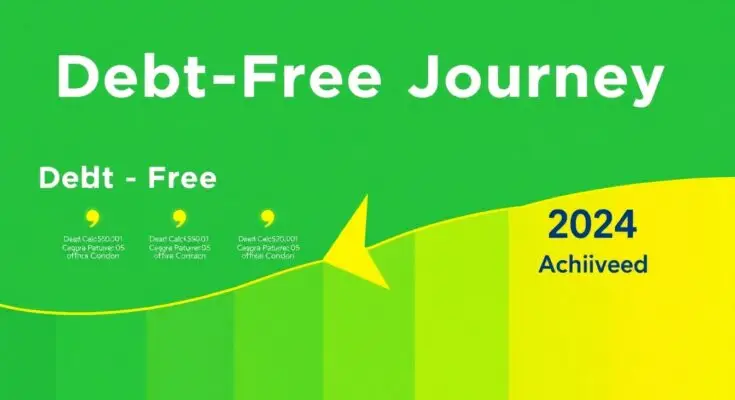Analyzing the 2024 Debt Crisis
Economic turmoil makes it more difficult to shoulder indebtedness. Today, the average American household has a debt of $96,371, which includes mortgages, credit cards, and student loans. This has gradually increased over the years, which is more severe due to the increase in living expenses. However, 2024 ushers in an era for healthy optimists in controllable financial management as well as conquering the restrictions of debt.
Why 2024 Offers New Opportunities
The current year presents several advantages for those serious about debt reduction.
The patterns of interest rates for monetary transactions have started to axiomatically incline towards constancy, thereby offering more reliable conditions under which, for example, refinancing and consolidation of debt can take place. The growth of remote working has also contributed in the ways that new income gears are making it easy to earn some cash to pay off the debts. Also, new avenues for solving debts have emerged where help is there for people struggling with too much debt burden. Nowadays, it has never been easier to observe the trends of expenditures as well as the rate of progress in repaying debts, complemented by the fast-growing gig economy, which also seeks to fill in the gaps in one’s finances in an easy manner.
Creating Your Financial Blueprint

The repayment journey begins, of course, with the overhaul of one’s finances. Thus, collate your various financial documents and list down all the debts you have incurred. Record the current balance for each debt, the interest rate, and the minimum payment required. Obtain your credit report in order to find out whether there are any other debts you might be forgetting and to also appreciate how your debt ratio is triangulated with the scoring. Last, study your spending habits for the past three months and try to find out the unnecessary expenses that can be trimmed so that money can be redirected towards debt repayment.
Setting Achievable Financial Goals
It should be noted that in order to accomplish the goal called repayment of debts, clear and quantifiable goals should be set. Instead, it is recommended to begin with settling one smaller debt within three months, for instance, in a short-term goal, for the sake of momentum generation. For medium-term goals, structure the debt in a way that decreases by 25% in six months after making payments and controlling expenses. Create a vision of being free of debt two years from now, but feel free to modify this horizon according to the total amount of debt you have and the means at your disposal. Such SMART (Specific, Measurable, Achievable, Relevant, Time-bound) goals help in concentrating focus and sustaining the mental energy needed to see the process to its endpoint.
Strategic Budgeting for Success

Simply preparing a plan on income and expenses will not be suitable for preparing a working budget. First, you must enclose every source of income that comes in; this includes the salary, other professions, and financial benefits, among others. Next, consider the important costs that include accommodation, energy, feeding, as well as travel. Next, consider the non-essential expenses that can be cut down or even avoided, for instance, cable or satellite television or eating at restaurants. Set aside a certain amount towards debts, but make sure it is above the minimum repayment level. Include a savings goal, even if small, to build an emergency fund that prevents future debt
Choosing Your Repayment Strategy
Two principal strategies for debt repayment each come with their own distinct merits. The Snowball Approach concentrates on clearing one’s tiniest debt to the maximum while making only minimum payments on the other debts. This approach provides quick wins and builds motivation through visible progress. As each small debt is eliminated, you roll that payment amount into the next smallest debt, creating momentum like a growing snowball. The Avalanche Method targets debts with the highest interest rates first, which saves more money over time but requires stronger discipline. This method makes mathematical sense but may take longer to see tangible progress.
Maximizing Income Opportunities
The speed of debt reduction increases considerably with the increase in one’s earnings. Remote work has become very popular, allowing people to engage in freelancing in writing, designing, and virtual assistant jobs. The demand for the provision of marketing services continues to increase, and companies require social media managers and content writers. Online tutoring provides flexible hours and competitive pay rates, especially in subjects like mathematics and English. Food delivery services offer immediate income opportunities with flexible scheduling. Virtual assistance work continues to grow, with businesses seeking remote support for administrative tasks.
Smart Debt Consolidation Approaches

Debt consolidation can simplify repayment and potentially reduce interest rates. Balance transfer credit cards offer zero-percent introductory rates, allowing you to pause interest accrual while aggressively paying down debt. Personal consolidation loans might offer lower interest rates than credit cards, especially if your credit score has improved since incurring the original debt. Home equity options provide lower interest rates but require careful consideration given the risk to your home. Debt management programs through credit counseling agencies can help negotiate lower rates and create structured repayment plans.
Building Financial Resilience
Protection against future debt requires building financial resilience. Start by creating an emergency fund, even if you can only save $25 per week initially. This fund provides a buffer against unexpected expenses that might otherwise lead to new debt. Adopt strong money management skills through educational resources and budgeting tools. Make an effort to diligently account for every expense in order to be conscious of your spending habits. Notice and, more importantly, appreciate the small wins in this journey, like clearing the balance on a credit card or hitting a target savings figure.
Conclusion
Overcoming debts in the year 2024 goes beyond writing and planning; it requires actions to be taken. In reading this all-inclusive guide, you have taken the first step to achieving financial independence. Always remember that everyone’s journey to being debt-free, male or female, begins with one paying off the first debt and is built over time through persistence.
Begin today with a simple action that is within your means—be it a list of the debts you owe or working out a simple budget. The troubles you are addressing now will absolve and allow you the financial freedom that you are targeting. There is a possibility with hard work and proper planning that by the end of the year 2024, you will have dealt with all outstanding debts and established a financial base for yourself going forward.
The Earning of this attribute takes time and effort to harness, for it is worthwhile at all times. So go ahead and seize this moment, starve the critics of access to your time, and make 2024 the year when you become whole with respect to your financial status.
FAQ’s
Q: Debts can accumulate over the years, and how long does it usually take for one to become debt-free? A: The recovery time depends on income and debt size, but a good proportion of them succeed within 2-5 years of working hard.
Q: Is it wise to tuck away some money for savings while on a debt repayment plan? A: Yes, it is wise to keep a mini emergency fund to counteract new debt whenever any unplanned expenses arise.
Q: Is it advisable to consider in most cases and hence much debt restructuring? A: It is all in your circumstances; consolidation strategy works best where there is good credit and a proper roadmap is in place for repayment.
Q: May I do it on my own and talk to the creditors? A: Of course, many creditors will deal with you directly and find a plan for you to afford to pay them.
Q: Once credit cards are paid in full, does that mean they can be rendered idle? A: Usually not, as this may negatively impact your credit score due to the decrease in available credit.



